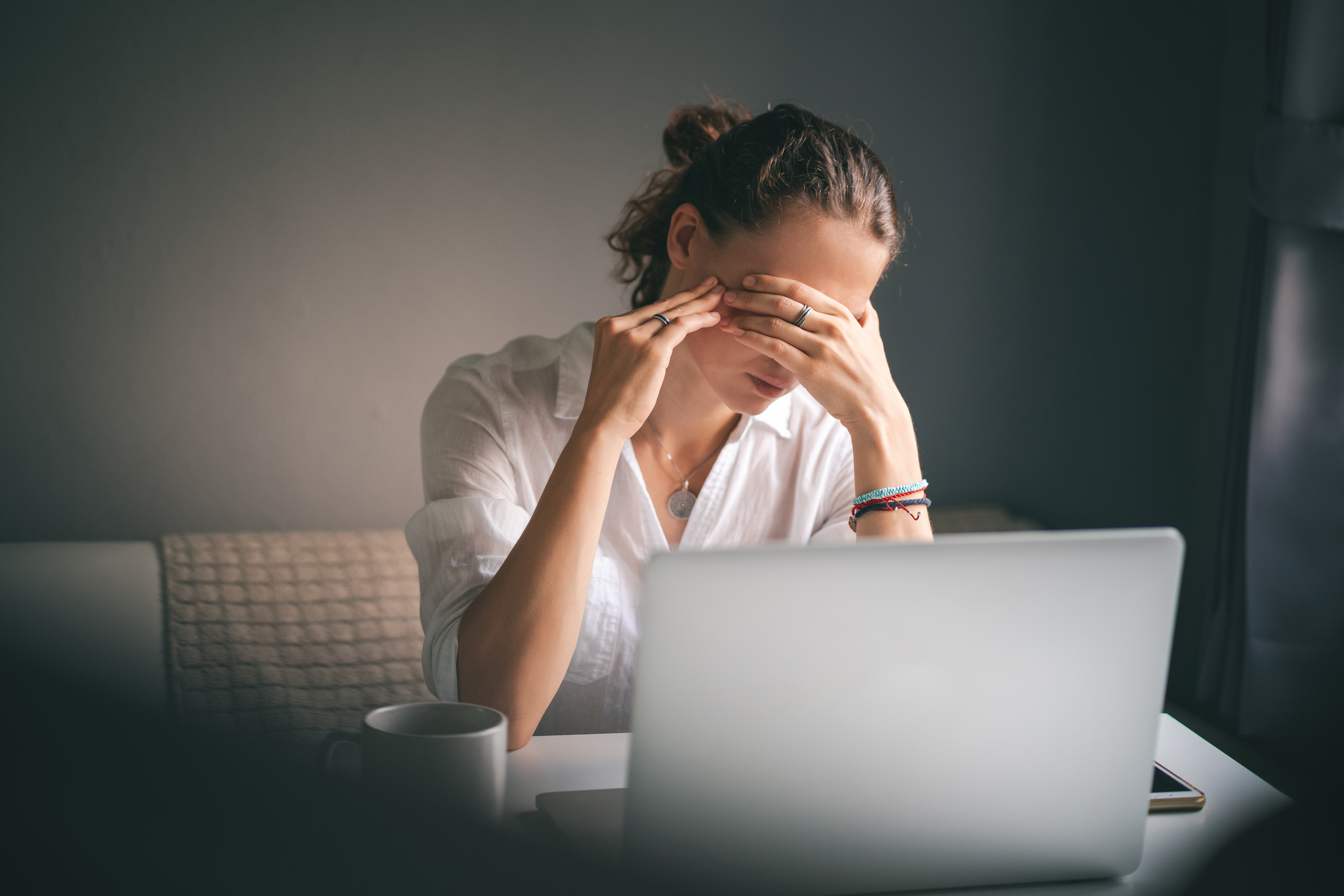
Interview with Beth Romanski, MUIH Director of Professional and Continuing Education (PCE), Integrative Health Coach and PCE Resilience Retreat Facilitator.
What does burnout look like?
“Burnout” was originally categorized as a workplace phenomenon that is a result of chronic workplace stress.
According to a 2021 survey by Mental Health America, most employees are experiencing the early signs of burnout and 99 percent agreed workplace stress affects their mental health^1, so this is a widespread condition that has expanded to include aspects of both professional and personal life.
There are various instruments to assess burnout, but generally the three dimensions of burnout are emotional exhaustion, depersonalization, and personal accomplishment. Behavioral signs can include poor sleep, apathy, feeling isolated, being overly reactive; Emotional signs may be constant anxiety, fear, sadness, and irritability or anger; Cognitive signs can be exhibited by difficulty concentrating and over-analysis or rumination of events; and Physical signs can manifest in pain, chronic health conditions and fatigue.
All of this can lead to increased mental distance, feelings of negativism or cynicism and reduced professional efficacy in one’s job.
More frequently, particularly during the pandemic, people were experiencing a state of “languishing” – the feeling of meh, bleh, fogginess, emptiness and lack of motivation and general malaise.
What causes burnout?
There is no one “cause” for burnout – there can be a multitude of systemic conditions within our societal constructs and organizational structures that contribute to burnout.
Burnout usually occurs from a slow build-up of chronic, unmanageable stress. However, there is another form of burnout that is caused by work that is unrewarding. Interestingly, the early signs of burnout are exhibited by excessive ambition, pushing yourself to work harder and neglect of self and personal needs.
Avoiding Stress Isn’t the Answer…
Everyone responds to stress differently – and not all stress is necessarily “bad” – stress is a reality of life. Rather than trying to avoid all stress or feeling like a failure if you experience stress, it may be more useful to find ways to understand our individual stress triggers and our limits to manage and adapt to stressful situations more proactively. As an Integrative Health Coach and through the training and coaching programs I facilitate through MUIH PCE, participants are guided to regain a state of equilibrium and ultimately flourishing by setting their individual wellness goals which can cover a wide variety of wellbeing domains (i.e., nutrition/nourishment, movement/physical activity, rest/recovery, play/creativity, self-reflection/spirituality, career/purpose, financial, relationships, environment, etc.).
Avoiding burnout can’t all be placed on the individual; employers need to take responsibility for their employees wellbeing to cultivate a culture of wellness with healthy employees, first by establishing structures that support wellbeing and by modeling healthy behaviors themselves (i.e., not sending work emails to employees on weekends).
How can someone recover from burnout?
There is no one-size-fits-all when it comes to health, yet prioritizing your wellbeing is the first step. The term “resilience” is typically associated with bouncing back from stressful situations; but ideally, we can work towards the state of not having to “recover” from a continuous cycle of burnout to develop sustainable and proactive healthy habits.
Start Where You Are…
This can involve creating your personal “menu” of self-care practices – ranging from 1–15-minute daily practices to longer practices of 1 hour to weekly or monthly. Many of us feel guilty about prioritizing our health and feel like “self-care” is out of reach – so I prefer to redefine “care of self” to other terms like rejuvenation, renewing, recalibrating, resetting – or even setting healthy boundaries (i.e., not checking work on weekends or saying no to a volunteer project or removing non-essentials off our too full plate). Shifting our perspective focus on what we CAN control – our mindset – can be helpful when things seem overwhelming. Practicing positive self-talk and self-awareness has been shown to enhance resiliency. We can make small daily investments in our wellbeing bank, such as eating a healthy meal, prioritizing sleep, not checking work on weekends, playing a game, or getting together with a good friend. As a Health Coach, I like to focus on progress, not perfection, and to give myself and others self-compassion along the way. It takes time and practice and may not always be a linear process. If we do our best on any given day and start small with tiny actions, these daily little investments in our health add up to big results. Lastly, seeking support from others can be quite effective in facilitating sustainable behavior change to maintain healthy habits. This can be friends, family, coworkers, a health coach, or a mental health provider. We need to realize that taking a step back and realizing your limits is an act of courage and unless you prioritize your life, someone else will.
Ready to Invest in Your Wellbeing?
Download our FREE PCE Resilience Reset Journal and contact the MUIH Office of Professional and Continuing Education (PCE) at to discuss a customized Regaining Resilience training program for your team or organization!
Blog Interview Bio:
Beth Romanski is an Integrative Nutrition Health Coach founder of MyHealthyTransitions Health Coaching and Co-Host of the Wellness Warriors Radio podcast and Diplomate of the American Institute of Stress. Beth is Director of Professional and Continuing Education and adjunct faculty member at Maryland University of Integrative Health, a leading academic institution solely dedicated to integrative health programs.
Beth understands first-hand the stress of work/life expectations and believes there’s no one-size-fits all when it comes to health. Beth takes an educational and empowering approach to facilitate positive habits that support holistic wellbeing and sustainable results, with the mindset that “being healthy doesn’t have to be hard.”
Learn more about MUIH PCE: www.muih.edu/ce
References:
Mental Health America. (2021). 2021 Mind The Workplace Report. Alexandria, VA.
Lucangeli, D. SOS Joy Wanted. Psychiatria Danubina, 2021; Vol. 33, Suppl. 11, pp 42-43.